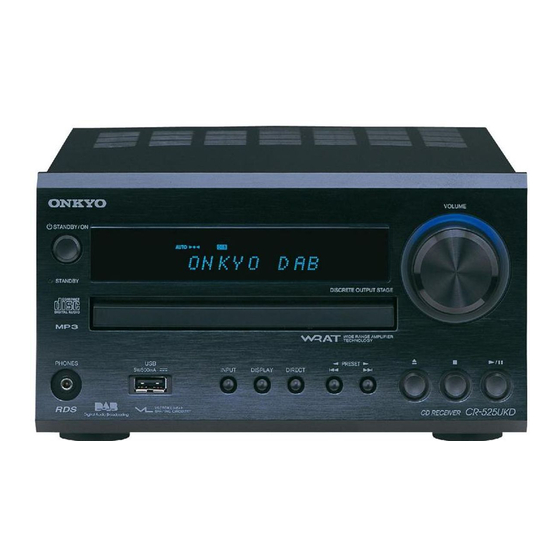
Table of Contents
Advertisement
CD Receiver
CR-525UKD
CR-425UKD
CR-325UKD
Instruction Manual
Thank you for purchasing an Onkyo CD receiver.
Please read this manual thoroughly before making
any connections and plugging it in.
Following the instructions in this manual will enable
you to obtain optimum performance and listening
enjoyment from your new CD receiver.
Please retain this manual for future reference.
Contents
Getting Started .......................... 2
Connections ............................ 17
Basic Operations .................... 25
Playing a Disc.......................... 28
USB Playback
(CR-525UKD only) ................... 37
Listening to the Radio ........... 41
Clock and Timer ...................... 52
Miscellaneous ......................... 59
Troubleshooting ................................59
If you can't resolve an issue, try reset-
ting the CD receiver by holding down
the [ ] button and pressing the
[STANDBY/ON] button.
E
n
Advertisement
Table of Contents














Need help?
Do you have a question about the CR-325UKD and is the answer not in the manual?
Questions and answers